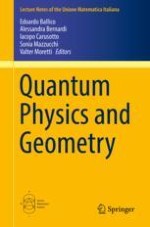This book collects independent contributions on current developments in quantum information theory, a very interdisciplinary field at the intersection of physics, computer science and mathematics. Making intense use of the most advanced concepts from each discipline, the authors give in each contribution pedagogical introductions to the main concepts underlying their present research and present a personal perspective on some of the most exciting open problems.
Keeping this diverse audience in mind, special efforts have been made to ensure that the basic concepts underlying quantum information are covered in an understandable way for mathematical readers, who can find there new open challenges for their research. At the same time, the volume can also be of use to physicists wishing to learn advanced mathematical tools, especially of differential and algebraic geometric nature.
